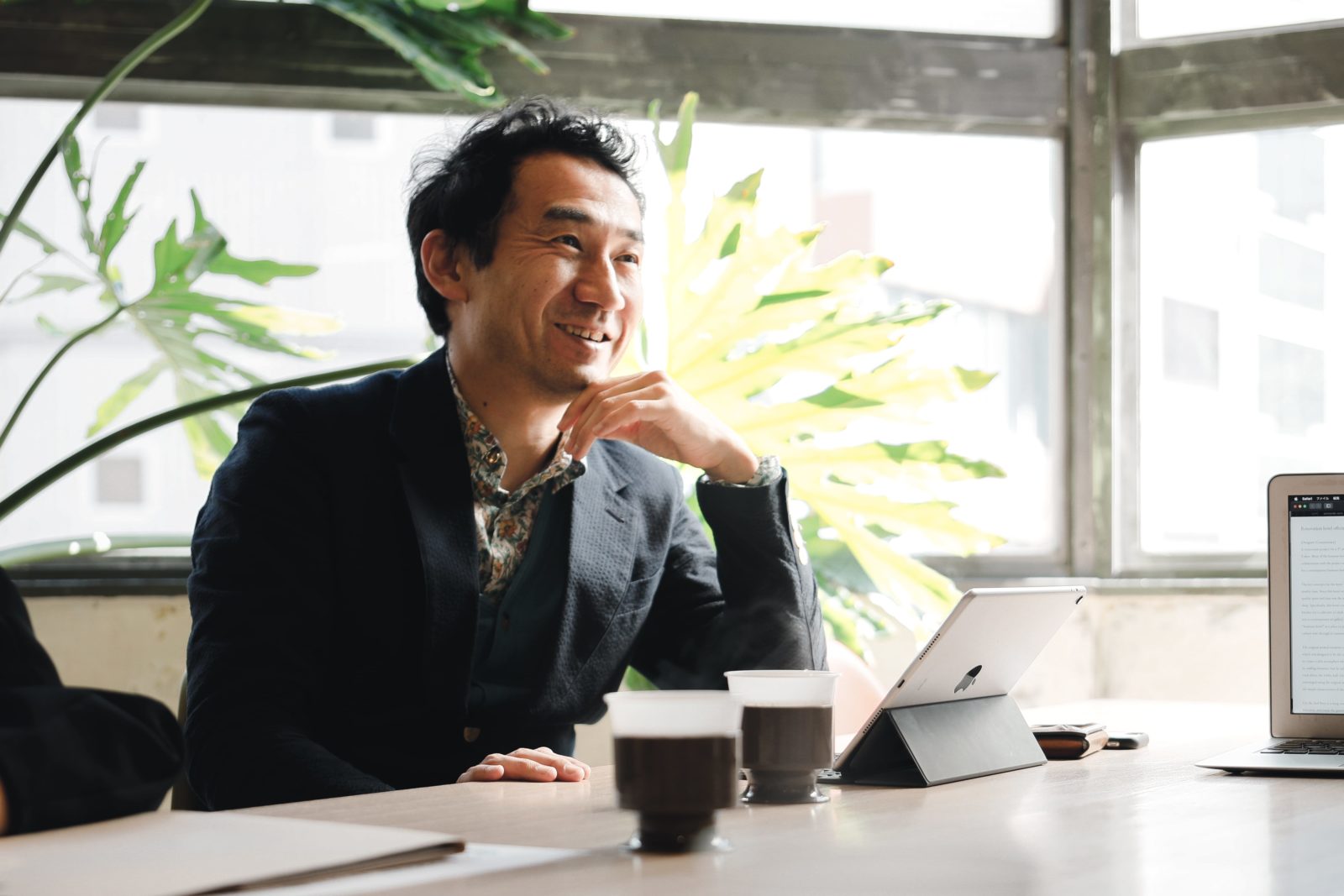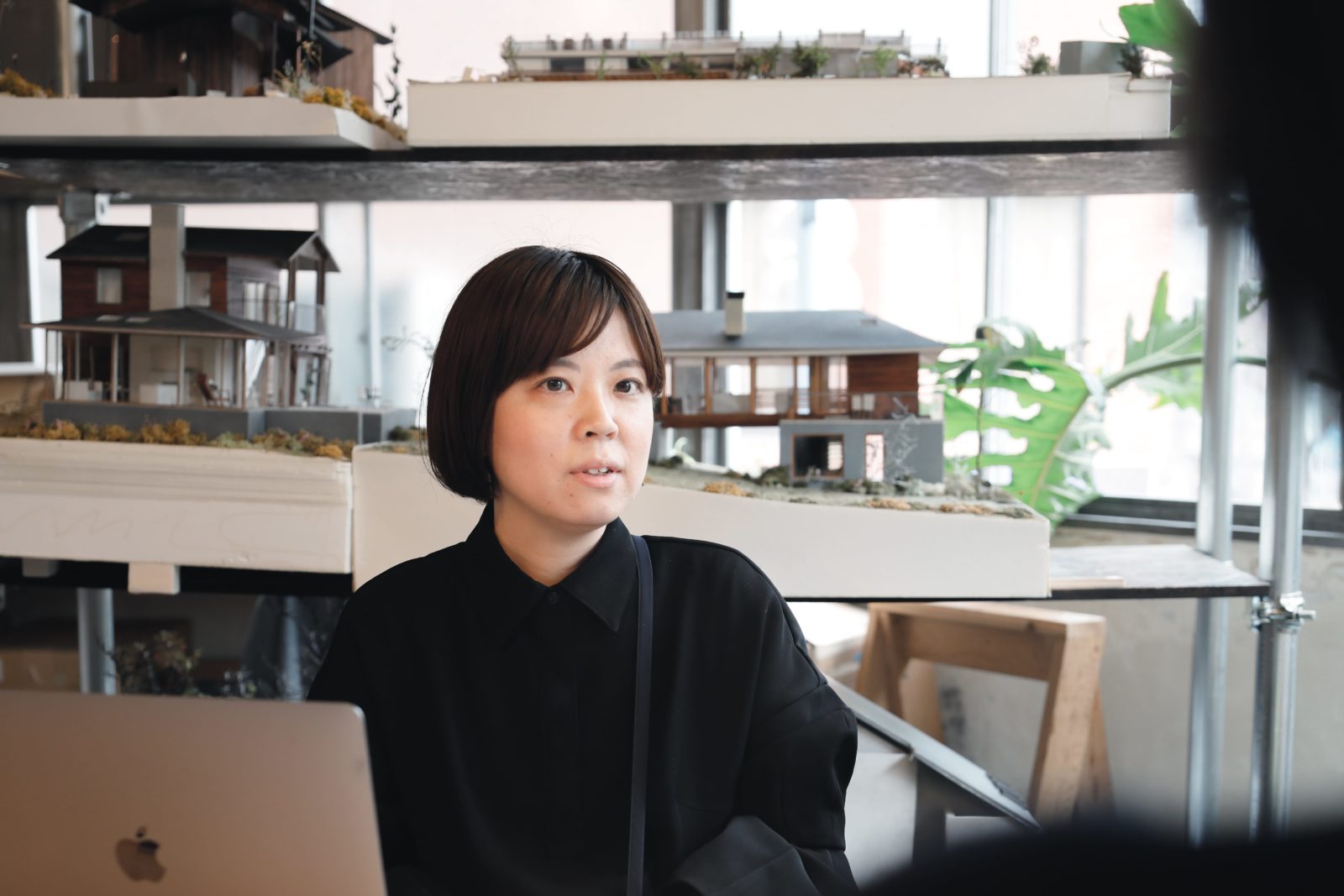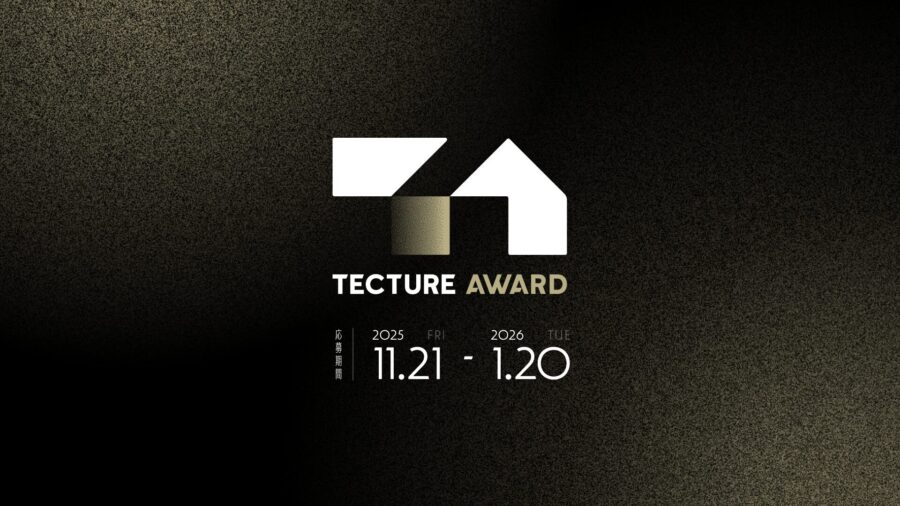住宅のほか各種施設の設計、そしてまちづくりなど、幅広く活動を展開するオンデザイン。
会社としての代表は西田司氏がつとめるが、プロジェクトにおいては彼をトップとする組織体制ではなく、プロジェクトごとにメンバーを構成する「パートナー制」をとっていることが大きな特徴である。
スタッフ1人1人が自立的にプロジェクトの共同設計者となり、推進する。
そうした体制とプロセスから生み出されるものには、個性的で多様な価値観が色濃く反映されている。
なぜこのような方針で事務所を運営しているのか、また実際のプロジェクトの進め方や働き方はどうなのか、目指す方向はどういったところにあるのか。
西田氏と、オンデザインでパートナーまたチーフとして活躍する萬玉直子氏にインタビューし、オンデザインの柔軟な姿勢と活動の秘訣を捉えた。
(jk)
Study Series
Interview with ondesign
オンデザイン「正解のない時代で、共に進みつくる設計術」
#01 パートナー制で集合知を培い一歩進む
#02 プロジェクトマネジメントはチームにまかせる
#03 共感の時代は「楽しそう」で生き抜く
#04 プロジェクトは同じベクトルを向いて軸を提案
ondesign is involved in a wide range of activities, including the design of houses and other facilities as well as urban development.
Although Mr. Osamu Nishida heads the company, one of its most distinctive features is its “partner system,” in which each project has its members, rather than an organizational structure headed by Mr. Nishida.
Each staff member independently becomes a co-designer of the project and promotes it.
The unique and diverse values that emerge from such a system and process are strongly reflected in the projects.
Why does the firm operate under this policy, how do they carry out their projects, how do they work, and where do they want to go?
We interviewed Mr. Nishida and Naoko Mangyoku, a partner and chief of ondesign, to discover the secrets behind ondesign’s flexible approach and activities.
(jk)
Study Series
Interview with ondesign
“A design technique that advances together in an era without correct answers”
#01 Cultivating Collective Knowledge through Partnerships and Going One Step Further
#02 Leave project management to the team
#03 Survive in a time of empathy with a “joyful” look
#04 The project proposes axes facing the same vector
悩みながら前に進む力を養ってほしい
── オンデザインの「パートナー制」は、実際のところどのようなもので、どんな狙いがあるのでしょうか?
西田 司(以下、西田) オンデザインでは設計業務に、パートナー制を採用しています。
僕がすべてのプロジェクトのハンドルを操縦してスタッフがサポートするのではなく、スタッフそれぞれがメインで案件を進める共同設計者となります。
自分は今、大学で教えているんですけど、「これをやったら正解」みたいな教育もあると思います。
工業的なものであれば「去年より生産性を上げよう」とか「去年より軽くしよう」とか。過去をちゃんと理解して、一歩前に進めるという教育ですね。
方向性も決まっていて、「こっちに行けば正解」「売れる」というようなことです。
でも建築にはその「正解」や、「これやったらいいよ」みたいなのはない、と思っているんです。
それは高齢化のせいなのか、少子化のせいなのか、そもそもビジネスモデルが変わっているのか分からないですけど。
そういうときに必要なのは、「よく分からないなりに走れる力」なんじゃないかと。
学生は卒業研究も論文も、建築家として活動している人と組んでみると、建築家がみんなびっくりするくらい悩んでいることが分かるはずです。
正解はないけど、悩みながら進む。そうした「進む力」を養えるといいのかなと思って、オンデザインではやっています。
悩んで止まってしまうのではなく、分からないなりに前に進む力を培う。
なので、悩むのを推奨しています(笑)。
Nurture your ability to move forward while worrying
── What is ondesign’s “partner system” really all about, and what are its aims?
Osamu Nishida (Nishida): ondesign adopts a partner system for design work.
I am not behind the wheel of every project, and the staff support it, but each staff member becomes a co-designer who is mainly responsible for the project.
I’m teaching at a university right now, and I think there’s a certain kind of education that says, “if you do this, it’s the right thing to do.”
If it is an industrial project, they may say, “Let’s make it more productive than last year” or “Let’s make it lighter than last year.” It’s about understanding the past and taking the next step forward.
The direction is fixed, and it’s like, “If you go this way, it’s the right way” or “It will sell.”
But in architecture, there is no such thing as a “right answer” or a “good idea.”
I don’t know if this is because of the aging population, the declining birth rate, or the fact that the business model is changing in the first place.
What is needed in these times is “the ability to run even though you don’t understand it.”
If students try working with someone who works as architects for their graduation research and thesis, they will find that all architects are surprisingly troubled.
There is no right answer, but they go forward while worrying. We do this at ondesign because we think it would be good to foster that kind of “ability to move forward.”
Instead of stopping to worry, we cultivate the ability to move forward while not understanding.
That’s why I encourage people to worry (laughs).

スケッチを描かずにコメントに徹する
萬玉直子(以下、萬玉) 西田さんは悩むことを、とてもポジティブに捉えていますね。「悩み」というと個人の内側にある印象ですが、それを社会と結びつく「問い」としてアウトプットすることを意識しています。
── 設計のプロセスでも、同じような具合ですか?
西田 オンデザインの設計では、もう10年以上前にパートナー制に踏み切ってから、僕自身スケッチを描いていないんです。自分しか考えてないことが実現することに、興味がなくて。
担当するスタッフに「クライアントの要望と提案の軸がずれてるよ」とか「プロポーション変じゃない?」とかは言いますが。でも、言うくらいしかしません。
萬玉 設計事務所の設計の進め方って、ボスとパートナーというか、ボスとスタッフみたいな旧来の図式に勝手に当てはめて、スタッフは「ゴールはこっちだよ」とボスに決めてもらえると思いがちになるじゃないですか。
大学の設計教育も同じで、先生と1対1でエスキースを受けるので、なにか承認欲求に陥ってしまう。「これで本当に設計力って高まるのかな?」と思うこともあります。
オンデザインの場合はそうしたことがなくて、西田さんは目の前にできているものに対してコメントをくれるんです。
「超いいじゃん」とか、「なるほど、なるほど」とか「軸ずれてるよ」だったりなんですけど、具体的なゴールはまったく示されません。
私はオンデザインに入って10年になるんですけど、スタートの感覚は共有して、ゴールは見えない中にあって。
「こっちの方向かな」「こっちの方向ではないかな」という積み重ねです。
Stick to comments without drawing sketches
Naoko Mangyoku (Mangyoku): When we talk about “problems,” they seem to lie within the individual, but I’m conscious of putting them out in the form of questions connected to society.
── Is the same thing happening in the design process?
Nishida: I haven’t drawn any sketches of the design of ondesign since we decided on the partnership system more than ten years ago. I wasn’t interested in realizing things that only I had in mind.
I would say to the staff in charge, “The client’s request is not aligned with the proposal,” or “The proportions are weird.” I’ll say that. But I only do so much as speak.
Mangyoku: The way the design process at a design office is carried out is based on the old scheme of the boss and his partner, or the boss and his staff, and the team tend to think that the boss decides the goal, saying, “The goal is this way.”
It’s the same with university design education, where students have one-on-one time with their teachers, so they tend to fall into a desire for approval. I wondered, “Will this improve my design skills? Sometimes I think, “What’s the point?
With ondesign, you don’t have to do that, and Nishida would comment on what you have in front of you.
He would say things like, “That’s super nice,” or “I see, I see,” or “You’re off-balance,” but he never gave me a specific goal.
I’ve been with ondesign for ten years now, and while we share the same sense of starting, the goal is in the air. It’s an accumulation of thoughts like, “Is this the direction we should go?”

スタッフの集合値で「よく分からなさ」を持続する
── そもそもパートナー制にされた経緯は何でしょうか?
西田 自分が設計の基本計画をして、「こういう平面計画がいい」「こういう模型がいいじゃないか」と言って、それをスタッフが手伝ってくれるとします。
そのスタンスだと、自分の引き出しが尽きたら枯渇してしまう。「ちょっといいかも」って思うと、ついつい何回も使っちゃったりするんですよね。
こうした設計って、変な言い方ですけど、基本計画のファーストスケッチが完成形のようなものです。そこから後は再描写しているというか、リライトしてるだけというか。
スタッフも「西田さんの考えているのって、こういうことですかね」みたいな感じになってしまう。
たとえば今、設計の依頼を受けたとします。1カ月でスケッチを描いて、2年後の2022年にできたときは、2020年の過去をリライトしているだけなんじゃないかと思ったんです。
そういうのがいいなと思っていた時代もありましたが、一切やめてパートナー制になりました。
今は事務所に40人くらいいて、40とおりの頭脳があって、それぞれに影響を受けている建築とか、環境とか知見がある。
そういうのをかけ合わせたり、いい意味で事務所の集合知にしたほうが、できるものの「よく分からなさ」が持ち続けられるんじゃないかと思うんです。
そのよく分からない感じを、自分も楽しんでいます。
Sustaining "unfamiliarity" in the collective value of the staff
── How did you come to the partnership system in the first place?
Nishida: I make the basic plan for the design and say, “This is a good plan,” or “This is a good model,” The staff helps me with that.
With that stance, I would run out of ideas. Whenever I think something is good, I end up using it over and over again.
This kind of design is strange, but the first sketch of the basic plan is like the finished product. From there, we re-described it or rewrote it.
The staff is like, “Is this what you have in mind?
For example, let’s say I was asked to design a building now, and I drew a sketch in a month, and when I finished it two years later in 2022, I thought that I was rewriting the past in 2020.
There was a time when I thought that kind of thing was a good idea, but I stopped doing it and went to a partner system.
Now there are about 40 people in the office, each with 40 different minds, and each with their influences on architecture and the environment and knowledge.
I think it would be better to cross-pollinate these things and make them into the office’s collective knowledge in a good sense so that the “unfamiliarity” of what we can do can be maintained.
I enjoy that sense of unfamiliarity.
(Continued on #02 Leave project management to the team)

Study Series
Interview with ondesign
オンデザイン「正解のない時代で、共に進みつくる設計術」
#01 パートナー制で集合知を培い一歩進む
#02 プロジェクトマネジメントはチームにまかせる
#03 共感の時代は「楽しそう」で生き抜く
#04 プロジェクトは同じベクトルを向いて軸を提案
Study Series
Interview with ondesign
“A design technique that advances together in an era without correct answers”
#01 Cultivating Collective Knowledge through Partnerships and Going One Step Further
#02 Leave project management to the team
#03 Survive in a time of empathy with a “joyful” look
#04 The project proposes axes facing the same vector





![〈ホテル イル・パラッツォ〉再生ストーリー:アルド・ロッシの名建築を内田デザイン研究所がリ・デザイン、総工費約18億円の改修プロジェクトの裏側[現地レポート&インタビュー]](https://magazine-asset.tecture.jp/wpcms/wp-content/uploads/2024/01/08001722/20231001hotel-il-palazzo_28-2press-satoshi-asakawa-900x600.jpg)
![[Interview]議論が深まった「万博と建築」のこれから(5/5)大阪・関西万博を五十嵐太郎が語る](https://magazine-asset.tecture.jp/wpcms/wp-content/uploads/2024/06/01144647/feature_202406_005.jpg)


![[Interview]佐々木 慧:正しさの先にある「面白い建築」を求めて1/2](https://magazine-asset.tecture.jp/wpcms/wp-content/uploads/2024/04/24114130/24_0424_t-900x675.jpg)

